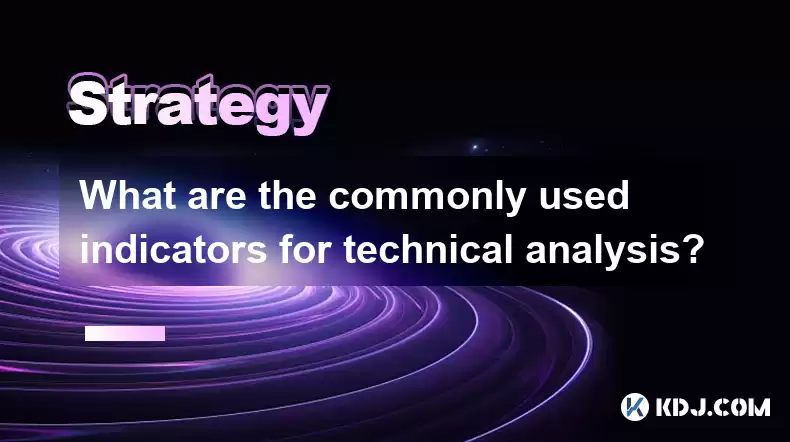-
 Bitcoin
Bitcoin $119900
1.12% -
 Ethereum
Ethereum $4599
9.32% -
 XRP
XRP $3.282
4.63% -
 Tether USDt
Tether USDt $0.9998
-0.02% -
 BNB
BNB $833.4
3.91% -
 Solana
Solana $193.3
10.47% -
 USDC
USDC $0.9999
-0.01% -
 Dogecoin
Dogecoin $0.2366
5.64% -
 TRON
TRON $0.3534
2.64% -
 Cardano
Cardano $0.8477
9.54% -
 Chainlink
Chainlink $23.33
10.42% -
 Hyperliquid
Hyperliquid $45.59
5.29% -
 Stellar
Stellar $0.4509
5.00% -
 Sui
Sui $3.888
6.46% -
 Bitcoin Cash
Bitcoin Cash $620.4
7.20% -
 Hedera
Hedera $0.2613
6.53% -
 Ethena USDe
Ethena USDe $1.001
0.01% -
 Avalanche
Avalanche $24.75
8.33% -
 Litecoin
Litecoin $130.2
8.10% -
 Toncoin
Toncoin $3.541
5.12% -
 UNUS SED LEO
UNUS SED LEO $9.079
1.11% -
 Shiba Inu
Shiba Inu $0.00001367
5.60% -
 Uniswap
Uniswap $11.55
4.73% -
 Polkadot
Polkadot $4.181
8.43% -
 Cronos
Cronos $0.1664
0.63% -
 Dai
Dai $0.9998
-0.03% -
 Ethena
Ethena $0.7980
2.17% -
 Pepe
Pepe $0.00001225
8.94% -
 Bitget Token
Bitget Token $4.452
1.25% -
 Aave
Aave $317.1
8.17%
What are the commonly used indicators for technical analysis?
Technical analysis indicators guide cryptocurrency traders by identifying price trends, assessing volume, spotting trading opportunities, and managing risk.
Feb 19, 2025 at 11:48 pm

Key Points of Technical Analysis Indicators:
- Identify trends and patterns: Identify market trends, potential support and resistance levels, and the overall sentiment of the cryptocurrency market.
- Measure price momentum: Gauge the speed and strength of price movements, including overbought and oversold conditions.
- Assess volume: Determine the trading activity and liquidity in a particular cryptocurrency.
- Identify trading opportunities: Spot potential trading setups by combining multiple indicators and analyzing their relationships.
- Manage risk: Use indicators to set stop-loss orders, determine profit targets, and assess the overall risk of potential trades.
Commonly Used Technical Analysis Indicators:
1. Moving Averages:
- Smoothing price data to reveal long-term trends.
- Types: Simple moving average (SMA), exponential moving average (EMA), weighted moving average (WMA).
2. Support and Resistance Levels:
- Identifying price levels where market forces have historically caused a reversal in price direction.
- Used to set limit orders, determine potential retracements, and identify swing trading opportunities.
3. Relative Strength Index (RSI):
- Measuring the magnitude of recent price changes to indicate overbought or oversold conditions.
- Values range from 0 to 100, with values above 70 and below 30 indicating potential buying or selling opportunities.
4. Bollinger Bands:
- Enveloping price data to highlight volatility and potential trend reversals.
- Composed of three lines: a middle band (SMA), an upper band (2 standard deviations above the middle band), and a lower band (2 standard deviations below the middle band).
5. Ichimoku Cloud:
- A comprehensive indicator that incorporates various other indicators into a single chart.
- Components: Tenkan-sen (9-period moving average), Kijun-sen (26-period moving average), Senkou Span A (52-period displaced moving average), Senkou Span B (26-period displaced moving average), and Chikou Span (26-period displaced lagging line).
6. Fibonacci Retracement Levels:
- Identifying potential support and resistance levels based on the retracement percentages of a prior price swing.
- Common levels: 23.6%, 38.2%, 50%, 61.8%, and 78.6%.
7. Volume Profile:
- Analyzing the historical distribution of trading volume at different price levels.
- Highlights areas of support and resistance, identifies areas of liquidity, and provides insights into market sentiment.
FAQs:
1. What is technical analysis used for?
It is used to identify potential trading opportunities, manage risk, and make informed trading decisions.
2. How accurate is technical analysis?
It is not an exact science, and its accuracy depends on various factors, including market conditions and the trader's experience.
3. Is technical analysis necessary for trading?
It provides valuable insights, but it is not the only factor to consider when making trading decisions.
4. How do I choose the right indicators for my trading strategy?
Select indicators that align with your trading style, timeframe, and the specific cryptocurrency being analyzed.
5. Can technical analysis predict the future?
It cannot predict the future, but it can provide probabilities and identify potential trading opportunities based on historical trends and patterns.
Disclaimer:info@kdj.com
The information provided is not trading advice. kdj.com does not assume any responsibility for any investments made based on the information provided in this article. Cryptocurrencies are highly volatile and it is highly recommended that you invest with caution after thorough research!
If you believe that the content used on this website infringes your copyright, please contact us immediately (info@kdj.com) and we will delete it promptly.
- Unich's OTC Exchange: Surging with $1.2B Volume – What's the Hype?
- 2025-08-13 02:50:11
- MoonBull's Explosive Moves: Your Crypto Whitelist Ticket to Ride!
- 2025-08-13 02:30:11
- MAGACOIN Finance: Don't Miss the Presale Bonus!
- 2025-08-13 02:30:11
- Trump's Crypto Kingdom: $2.4 Billion and Counting
- 2025-08-13 02:50:11
- Solana, LSTs, and SEC Approval: A New Dawn for Crypto?
- 2025-08-13 02:55:12
- Bitcoin's Profit Surge: Unpacking the BTC Value Boom
- 2025-08-13 02:55:12
Related knowledge

How to use stop-loss orders to limit potential losses?
Aug 08,2025 at 02:01pm
Understanding Stop-Loss Orders in Cryptocurrency TradingA stop-loss order is a risk management tool used by traders to automatically sell a cryptocurr...

What are the most promising altcoins to invest in?
Aug 10,2025 at 11:42am
Understanding the Role of Private Keys in Cryptocurrency WalletsIn the world of cryptocurrency, private keys are the cornerstone of ownership and cont...

How to read cryptocurrency charts and use technical analysis?
Aug 08,2025 at 11:08am
Understanding the Basics of Cryptocurrency ChartsCryptocurrency charts are graphical representations of price movements over time. These charts are es...

What is the difference between long-term holding (HODLing) and short-term trading?
Aug 10,2025 at 05:30pm
Understanding HODLing in the Cryptocurrency SpaceThe term HODL originated from a typo in a 2013 Bitcoin forum post and has since become a widely accep...

How to do your own research (DYOR) before investing in a crypto project?
Aug 08,2025 at 09:07pm
Understanding the Core Principles of DYOR in CryptocurrencyEngaging in due diligence before investing in any cryptocurrency project is essential to mi...

How to build a diversified crypto portfolio?
Aug 09,2025 at 12:21pm
Understanding the Importance of Diversification in CryptoDiversification in the cryptocurrency space is a strategy used to reduce risk by spreading in...

How to use stop-loss orders to limit potential losses?
Aug 08,2025 at 02:01pm
Understanding Stop-Loss Orders in Cryptocurrency TradingA stop-loss order is a risk management tool used by traders to automatically sell a cryptocurr...

What are the most promising altcoins to invest in?
Aug 10,2025 at 11:42am
Understanding the Role of Private Keys in Cryptocurrency WalletsIn the world of cryptocurrency, private keys are the cornerstone of ownership and cont...

How to read cryptocurrency charts and use technical analysis?
Aug 08,2025 at 11:08am
Understanding the Basics of Cryptocurrency ChartsCryptocurrency charts are graphical representations of price movements over time. These charts are es...

What is the difference between long-term holding (HODLing) and short-term trading?
Aug 10,2025 at 05:30pm
Understanding HODLing in the Cryptocurrency SpaceThe term HODL originated from a typo in a 2013 Bitcoin forum post and has since become a widely accep...

How to do your own research (DYOR) before investing in a crypto project?
Aug 08,2025 at 09:07pm
Understanding the Core Principles of DYOR in CryptocurrencyEngaging in due diligence before investing in any cryptocurrency project is essential to mi...

How to build a diversified crypto portfolio?
Aug 09,2025 at 12:21pm
Understanding the Importance of Diversification in CryptoDiversification in the cryptocurrency space is a strategy used to reduce risk by spreading in...
See all articles

























































































